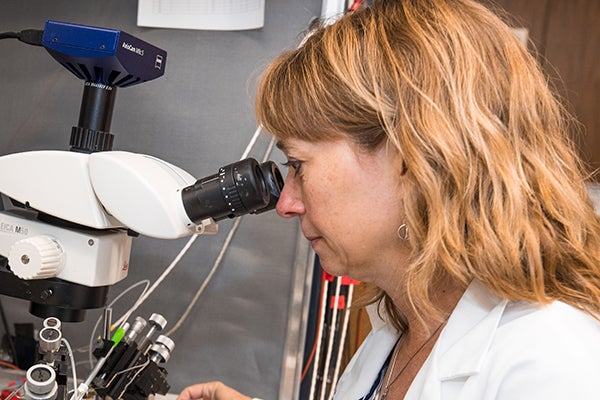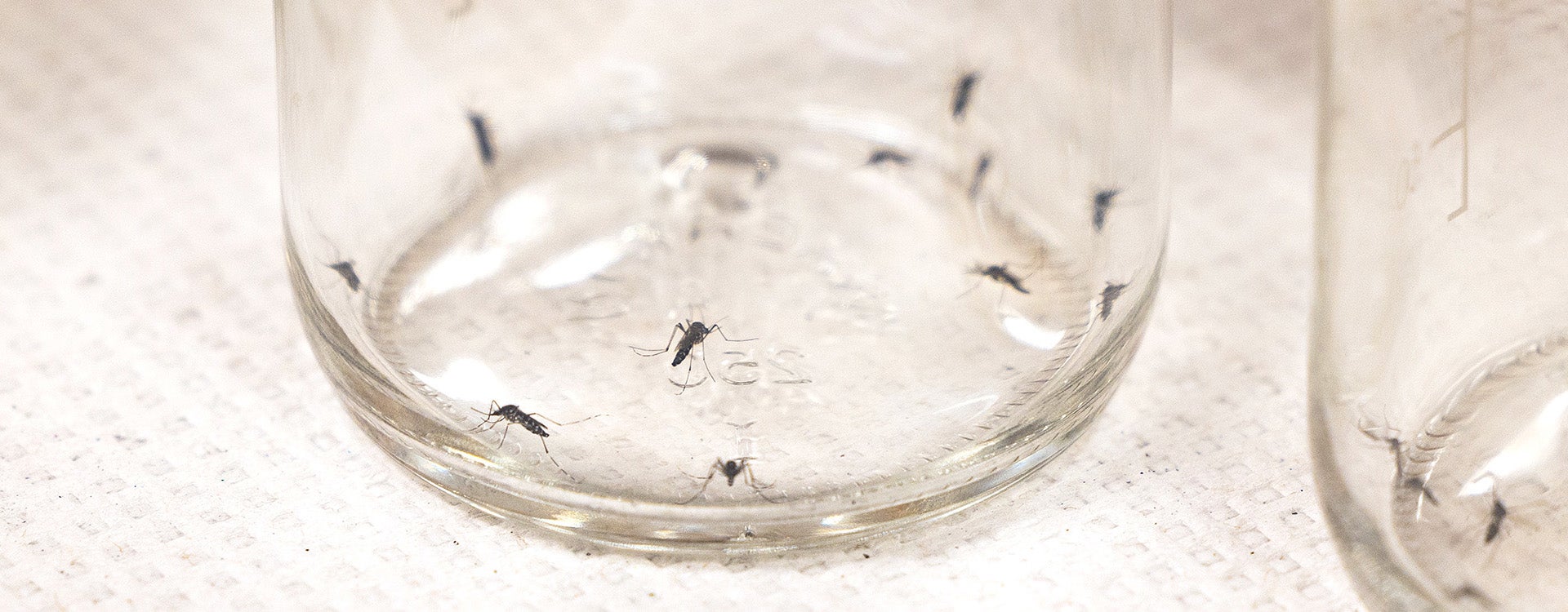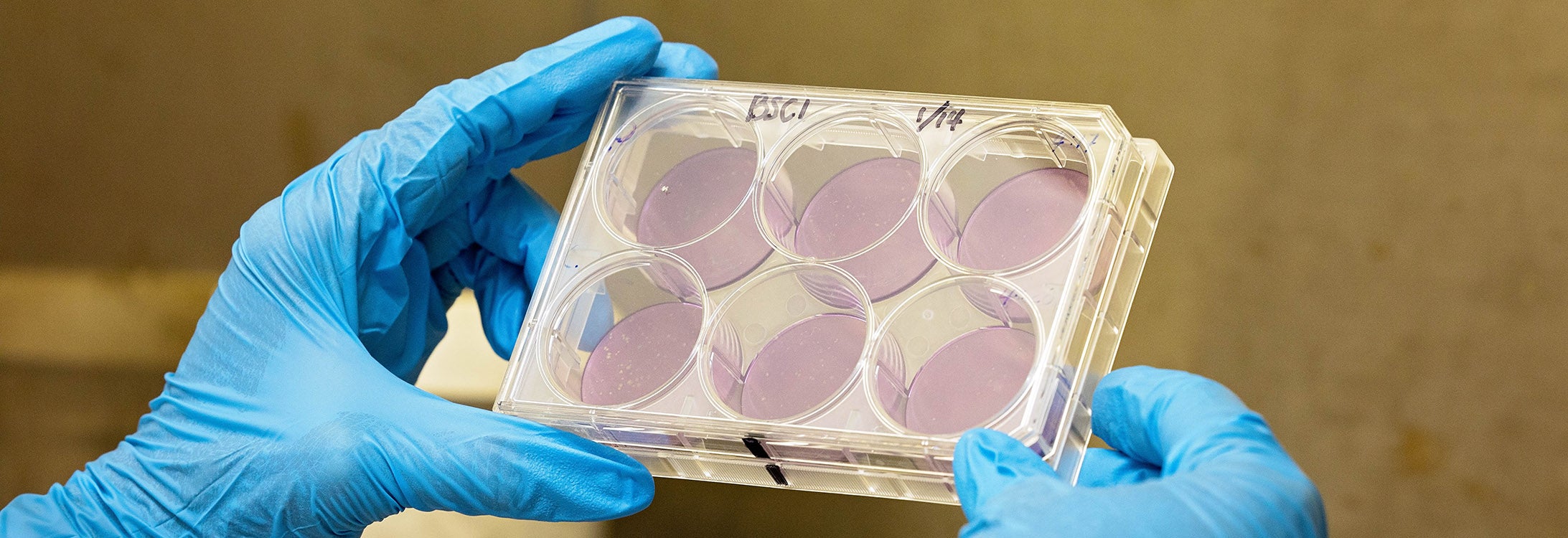INVESTING IN INNOVATION
ECU office helps researchers bring their ideas to market
How do you get a grant for your idea? ECU’s Carlyle Rogers explains.
For the translational research grants (TRG), the process typically starts with our Office of Licensing and Commercialization scouting for projects that have a strong intellectual property position, can demonstrate a clear competitive advantage and have a clear path forward in terms of commercialization.
Generally, three months ahead of the deadline we have a discussion with the faculty member about their goals, how we can leverage the grant to accelerate commercialization and what risks the invention has from a technical and business aspect. This may include regulatory challenges, understanding potential toxicity or side effects, comparisons with the current gold standard, investment funding and business plan creation. From there we start working with the faculty member on the grant and assembling a team of internal and external experts. These experts may be regulatory consultants, investors, business development specialists, industry partners or project managers. There is also a requirement that a member of our office serve on the team as well.
For flash grants, we reach out, but also have individuals from across campus contact us. The flash grant is more centered on establishing early-stage proof of concept for innovations that may have commercial potential or be disruptive to their respective field from a commercialization standpoint. Although the flash grant is similar to the translational research grant in terms of well-defined go/no-go type experiments, the flash grant does not require a well thought out commercialization or business development plan or an expansive team of industry experts compared to the TRG.
Although our office does not serve a role per se in the flash grant, we recommend that any interested faculty members contact our office for assistance. This includes marketability and patentability analysis, risk assessment and project development mapping.
— Doug Boyd
East Carolina University and the North Carolina Biotechnology Center are working together to bring new technologies to the marketplace.
Coordinating the work is the ECU Office of Licensing and Commercialization.
“This involves clearly communicating the commercial value, helping to design clear go/no-go technical and business milestones, understanding the market and assembling a well-rounded team of industry experts,” said Carlyle Rogers, licensing associate with the office.

Kori Brewer has worked with Stefan Clemens to develop a therapeutic for chronic pain that reduces the risk of opioid dependency. (Photo by Cliff Hollis)
Key to the process are awards such as translational research grants from NCBiotech.
“These grants address a very important gap,” Rogers said. “A lot of times research funding to address early-stage questions related to commercialization are often limited in a university setting. You may not think $20,000 to $100,000 would be critical for the overall success of the technology.” But, he added, leveraging such funds can help an idea get to the point where it’s ready to be licensed.
So far, the work has recently led to three licenses, one faculty-led startup company, an industry partnership, four issued patents and numerous new patent applications.
For example, Kori Brewer and Stefan Clemens at the Brody School of Medicine at ECU developed a novel combination treatment that allows opioid doses to be minimized but remain effective enough to treat patient pain. The idea promises to reduce or even remove the risks of treating chronic pain with opioids.
“On their own neither of these two drugs has an effect,” said Clemens, a professor of physiology. “Combined, they have a very strong analgesic effect.” The substances do not lead to tolerance or drug seeking.
With proof-of-concept data generated from a $110,000 translational research grant, Brewer, Clemens and the Office of Licensing and Commercialization were able to attract an array of interested investors and potential licensees. The work paid off. Chapel Hill-based startup Amalgent Therapeutics has licensed the technology.
“Carlyle reached out to us and asked, ‘Have you thought about this as an entrepreneurial product or as a patent?’” said Brewer, a professor of emergency medicine. “Now it’s on my radar. If you have an idea … communicate with (the Office of Licensing and Commercialization), and they can guide you through the process.”
“I have licensed technologies from all of the regional universities,” said Christopher Kelly, CEO of Amalgent. “The team at ECU is knowledgeable, professional and good to work with. They have been especially helpful as we prosecute the patent portfolio. We look forward to continuing our work together to minimize the dose necessary to provide pain relief for patients.”
Funding from NCBiotech to advance marketable ideas at ECU has been going on for several years. In 2016, Clemens received a grant of $100,000 to establish proof of concept of a therapeutic to treat restless leg syndrome. The compound, now patented, has attracted the interest of a company that may use it with one of its own therapeutics.
Other innovations that have received funding from the center include:
- Mark Mannie, professor of microbiology and immunology at Brody, received $100,000 to further his research on T regulatory cells that play a role in autoimmune diseases.
- Rachel Roper, professor of microbiology and immunology, and Lok Pokhrel, assistant professor of public health, each received $20,000 toward research on COVID-19 vaccines and therapeutics.
- Pokhrel received another $110,000 for his work developing a pesticide that uses nano silver to kill disease-bearing mosquitos.
- Anthony Kennedy, associate professor of chemistry, received $110,000 to further his work on blood cell preservation.
- Rukiyah Van Dross-Anderson, associate professor of pharmacology, received $110,000 to advance a topical treatment she’s developed for melanoma. She holds a patent for the compound and has started her own company, Claradele Pharmaceuticals.
- Mustafa Selim, professor of pharmacology at the Brody School of Medicine, received funding to test ways to detoxify foods contaminated with aflatoxin, a carcinogen associated with an increased risk of liver cancer.
Officials with NCBiotech said they’ve had a long and fruitful relationship with the university and its researchers.
“To date, NCBiotech has awarded more than $6.5 million in research grants to ECU,” said Rob Lindberg, vice president of science and technology development at the center. “As those grant programs increasingly focus on the translation and subsequent licensing of game-changing innovations, the ECU community regularly presents us with compelling funding opportunities such as these to support breakthrough innovations that address critically important societal challenges and deliver economic impact to the state,”
“That is the ultimate success,” Rogers said. “Anytime you can translate the science from the lab to a product that can help people, that’s special.”

The North Carolina Biotechnology Center has also funded research into a potential nanopesticide for mosquitoes. (Photo by Rhett Butler)
